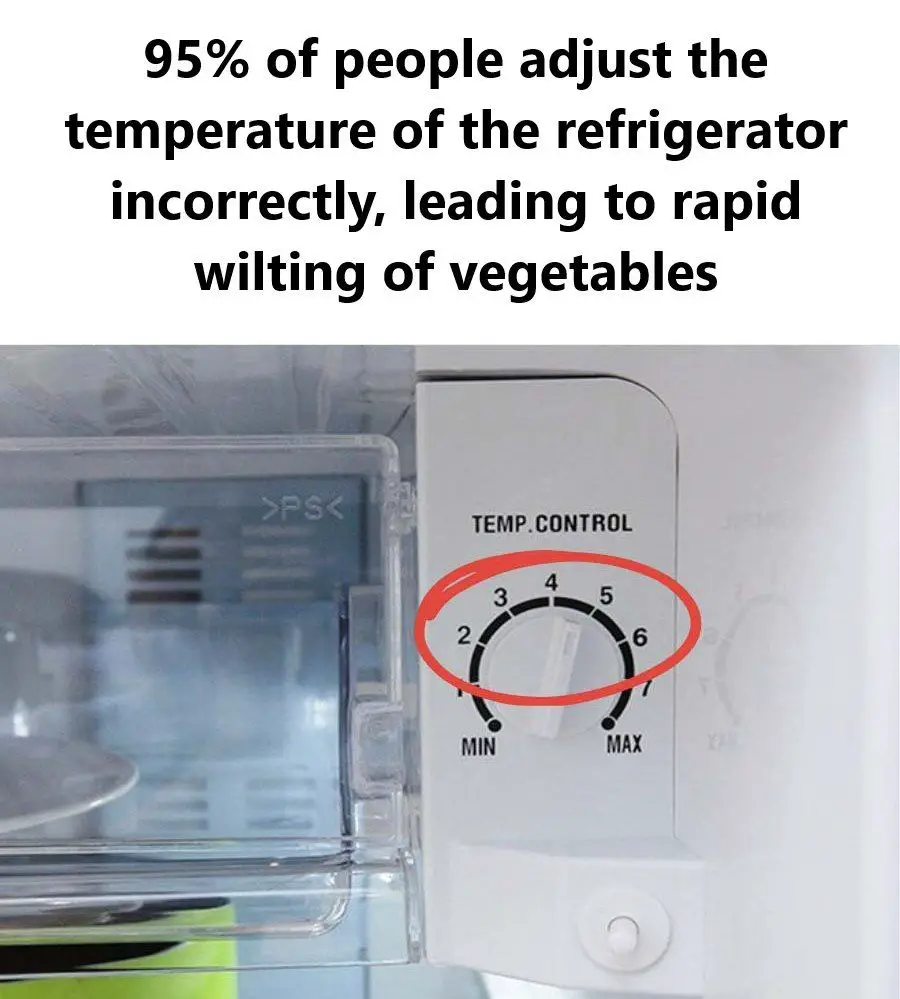Maintaining the correct refrigerator temperature is crucial for preserving the freshness and extending the shelf life of vegetables. An incorrect temperature setting can lead to rapid wilting, spoilage, and potential food waste. Surprisingly, a significant number of individuals inadvertently set their refrigerators to temperatures that are either too high or too low, adversely affecting the quality of their stored produce.
The Importance of Proper Refrigerator Temperature
Refrigerators are designed to slow down the spoilage process of food by maintaining a cold environment that inhibits bacterial growth. However, if the temperature is not set correctly, it can have the opposite effect:
- Too Low: Temperatures that are too cold can cause certain delicate vegetables, such as tomatoes or cucumbers, to freeze, altering their texture and taste.
- Too High: Warmer temperatures promote the proliferation of bacteria and accelerate wilting.
Ideal Temperature Range for Vegetables
The optimal temperature range for storing vegetables varies depending on their type and humidity requirements. Here are some general guidelines:
- Leafy Greens (e.g., lettuce, spinach, kale): These vegetables are particularly sensitive to heat and should be stored in the vegetable drawer, which often has an adjustable humidity level.
- Root Vegetables (e.g., carrots, beets, radishes): They can withstand slightly higher temperatures but should be stored away from excessive humidity.
- Fruit Vegetables (e.g., peppers, zucchini, eggplant): Less sensitive to cold, they retain their flavor and texture better at moderate temperatures.
General Refrigerator Temperature Recommendations
To ensure overall food safety and quality, it’s advisable to set your refrigerator temperature between 35°F and 38°F (1.7°C to 3.3°C). This range is as close as you can get to freezing without being so cold that your food will freeze. It’s also as close as the refrigerator temperature should get to the 40°F threshold, at which point bacteria begin multiplying rapidly.
Tips for Maintaining Optimal Refrigerator Conditions
- Use a Refrigerator Thermometer: Even if your refrigerator has a built-in temperature display, it’s a good idea to use an appliance thermometer to monitor the actual internal temperature. Place it in different sections of the fridge to ensure uniform cooling.
- Organize Your Refrigerator: Proper organization can help maintain consistent temperatures. Avoid overloading the fridge, as this can obstruct air circulation. Store vegetables in designated crisper drawers, which are designed to maintain appropriate humidity levels.
- Regular Maintenance: Ensure that refrigerator seals are intact to prevent cold air from escaping. Clean the coils and check for any technical issues that might affect temperature regulation.
- Avoid Frequent Door Opening: Minimize the frequency and duration of opening the refrigerator door to maintain a stable internal temperature.
Conclusion
Properly setting and maintaining your refrigerator’s temperature is essential for preserving the freshness of vegetables and preventing rapid wilting. By adhering to the recommended temperature ranges and implementing good storage practices, you can extend the shelf life of your produce, reduce food waste, and enjoy healthier meals.

